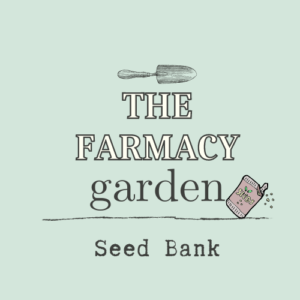Growing
A Gardener’s Guide: Stratifying Seeds for Successful Growth

Gardening is a timeless art, one that requires patience, dedication, and a bit of science. Among the various techniques employed by gardeners, seed stratification stands out as a crucial step for the successful cultivation of many plant species. Whether you’re a seasoned horticulturist or a novice enthusiast, understanding the process of seed stratification can significantly enhance your gardening endeavours. In this guide, we’ll delve into the intricacies of seed stratification, exploring its purpose, methods, and best practices.
What is Seed Stratification? Seed stratification is a natural process that mimics the conditions seeds undergo in their native environment to break dormancy and germinate. In nature, seeds often fall to the ground and experience fluctuations in temperature and moisture levels over time, which triggers biochemical changes within the seed, signalling it to sprout when conditions are favourable. By artificially recreating these conditions, gardeners can prompt seeds to germinate more reliably and uniformly.
Purpose of Seed Stratification: The primary purpose of seed stratification is to overcome dormancy barriers that prevent seeds from germinating under normal conditions. Many plant species, particularly those native to cold climates or regions with distinct seasonal changes, have evolved mechanisms to delay germination until conditions are suitable for survival. This dormancy ensures that seeds don’t sprout prematurely, only to be killed by frost or other adverse environmental factors.
Through seed stratification, gardeners can effectively simulate the passage of time and the exposure to cold temperatures that seeds would naturally experience. This process helps to weaken or remove the barriers to germination, increasing the likelihood of successful seedling establishment.
Methods of Seed Stratification: Seed stratification involves subjecting seeds to a period of cold, moist co
-
Seed Selection: Start by selecting viable seeds from healthy plants. Collect seeds when they are mature but before they have fully dried out.
-
Clean and Prepare Seeds: Remove any debris or fruit pulp from the seeds, and rinse them gently with water if necessary. Avoid damaging the seed coat, as this could impair germination.
-
Choose a Stratification Method: There are several methods for stratifying seeds, including refrigerator stratification, outdoor stratification, and stratification using a moist medium such as vermiculite or peat moss.
-
Refrigerator Stratification: Place the clean, moistened seeds in a labeled, breathable container such as a plastic bag or seed tray filled with dampened vermiculite or paper towels. Seal the container and place it in the refrigerator, maintaining a temperature between 1-5°C (33-41°F). Check the seeds periodically for signs of mold or rot, and adjust moisture levels if necessary.
-
Outdoor Stratification: Alternatively, seeds can be stratified outdoors by planting them directly in the garden bed or in pots filled with a moist growing medium. Cover the seeds lightly with soil or mulch to protect them from birds and rodents. Ensure the planting site receives adequate moisture and protection from extreme temperatures.
-
Monitor Progress: Throughout the stratification period, monitor the seeds regularly for signs of germination or decay. Once the stratification period is complete, carefully transplant the stratified seeds into their permanent growing location, following the specific planting instructions for each species.
Best Practices for Seed Stratification:
- Research the specific stratification requirements for each plant species, as optimal conditions can vary widely.
- Use fresh, high-quality seeds to maximize germination success.
- Label containers clearly to avoid confusion, especially if stratifying multiple seed varieties simultaneously.
- Maintain consistent moisture levels throughout the stratification period to prevent seeds from drying out or becoming waterlogged.
- Keep stratifying seeds away from ethylene-producing fruits, as ethylene can inhibit germination.
Conclusion: Seed stratification is a valuable technique that empowers gardeners to unlock the potential of dormant seeds and cultivate a diverse array of plant species with greater success. By understanding the principles and methods of seed stratification, gardeners can overcome dormancy barriers and nurture thriving gardens filled with vibrant flowers, robust vegetables, and majestic trees. Whether you’re embarking on your first gardening adventure or refining your green thumb skills, seed stratification is a time-tested tool that can elevate your gardening experience and yield bountiful rewards. Happy gardening!

